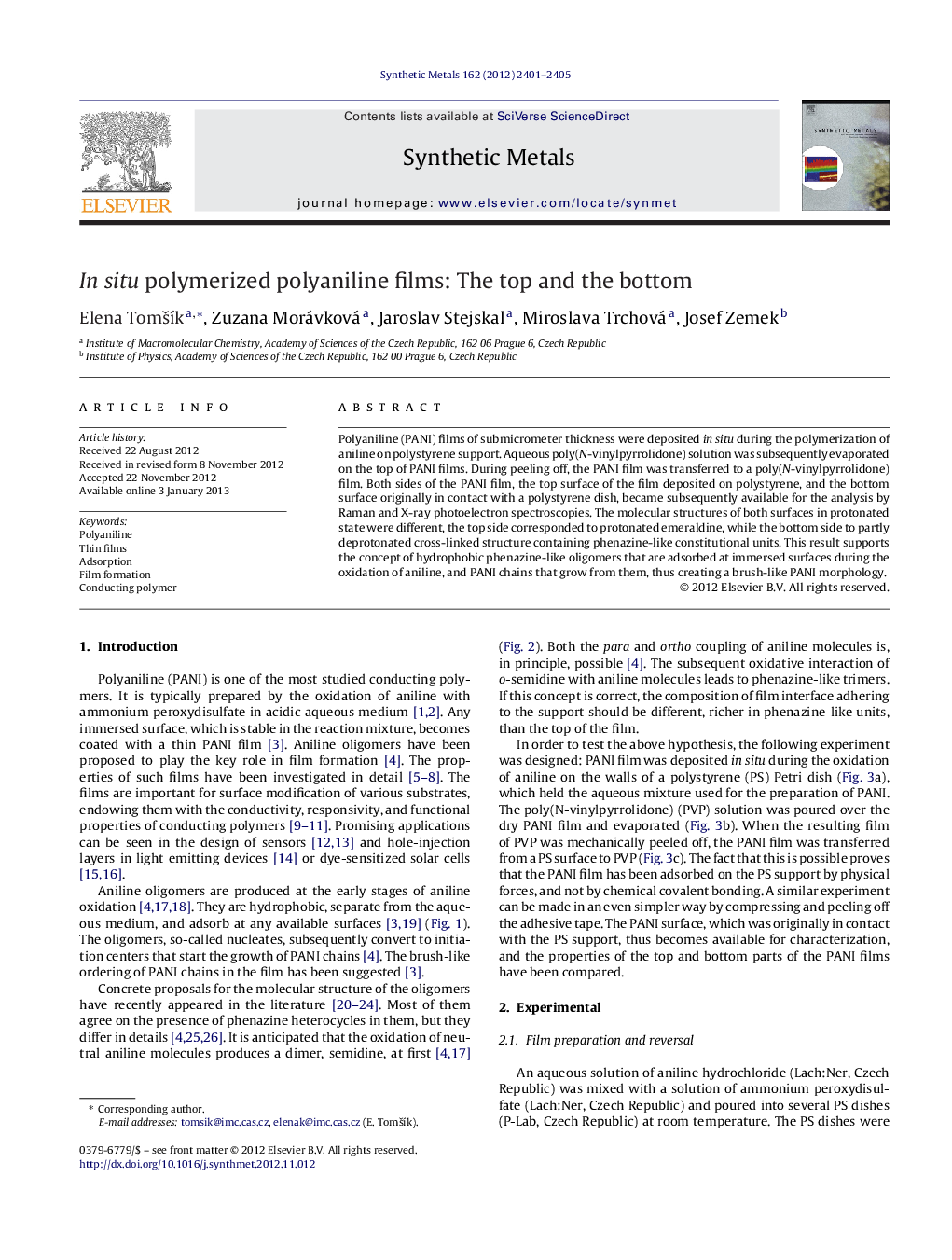| Article ID | Journal | Published Year | Pages | File Type |
|---|---|---|---|---|
| 1441553 | Synthetic Metals | 2012 | 5 Pages |
Polyaniline (PANI) films of submicrometer thickness were deposited in situ during the polymerization of aniline on polystyrene support. Aqueous poly(N-vinylpyrrolidone) solution was subsequently evaporated on the top of PANI films. During peeling off, the PANI film was transferred to a poly(N-vinylpyrrolidone) film. Both sides of the PANI film, the top surface of the film deposited on polystyrene, and the bottom surface originally in contact with a polystyrene dish, became subsequently available for the analysis by Raman and X-ray photoelectron spectroscopies. The molecular structures of both surfaces in protonated state were different, the top side corresponded to protonated emeraldine, while the bottom side to partly deprotonated cross-linked structure containing phenazine-like constitutional units. This result supports the concept of hydrophobic phenazine-like oligomers that are adsorbed at immersed surfaces during the oxidation of aniline, and PANI chains that grow from them, thus creating a brush-like PANI morphology.
► Polyaniline films were prepared on a polystyrene surface. ► The top and bottom sides of the films were characterized by various methods. ► The top and bottom sides have different molecular structures, as reflected by Raman and X-ray photoelectron spectroscopies. ► The top surface of the film corresponds to the protonated emeraldine form. ► The bottom surfacecontains non-protonated units.
